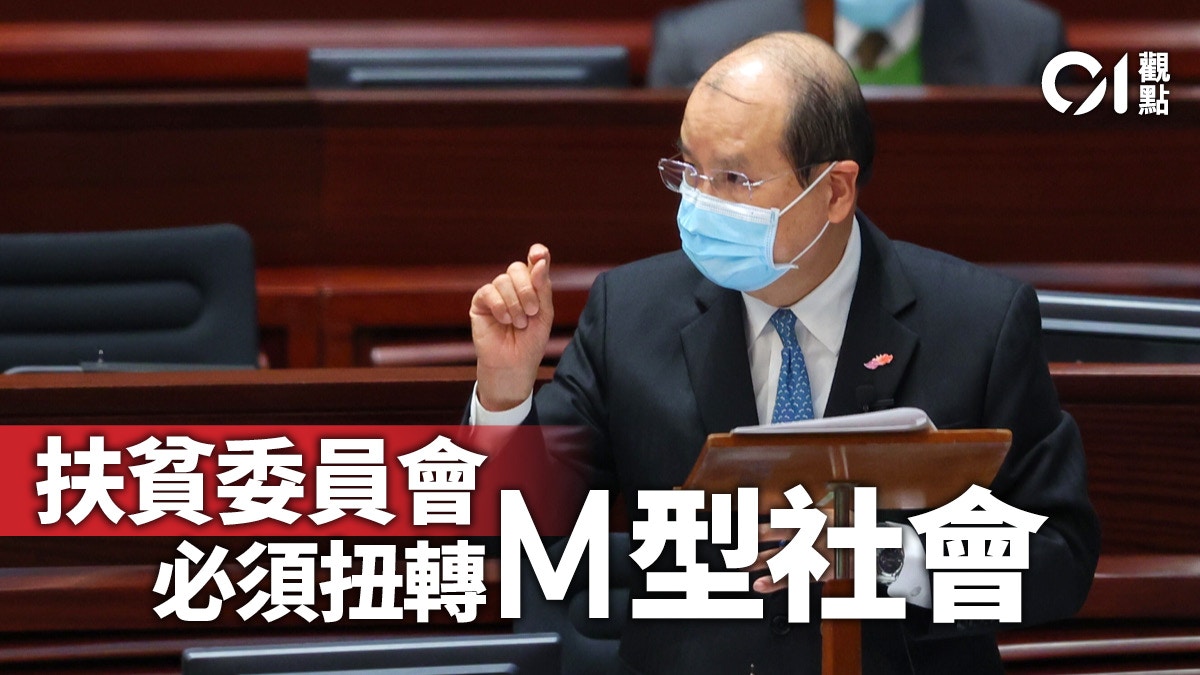01 view
Written by: Commentary Editing Room
2021-03-11 06:30
Last update date: 2021-03-11 06:30
Chief Secretary for Administration Zhang Jianzong presided over the 4th Poverty Alleviation Committee meeting on Tuesday (9th). At the meeting, it passed the improvement of the fund’s medical assistance project’s financial review mechanism and the increase of "non-public housing, non-CSSA, low-income households one-off living allowance "Project funding.
However, since the establishment of the Poverty Alleviation Committee in 2012, the poor population in Hong Kong has not risen but fallen. It has proved that the government's temporary assistance program has limited effectiveness and is difficult to change the situation of poor households.
In addition to rethinking the entry point of the poverty alleviation policy, the government must also allocate more resources in the long run to reduce the people's living expenses in areas such as housing, medical care, and elderly care.
On Tuesday, Zhang Jianzong held the third meeting of the Poverty Alleviation Committee in the form of video to follow up on the poverty alleviation measures proposed by Chief Executive Carrie Lam in his "Policy Address" last year, and passed two recommendations at the meeting.
The committee agreed to improve the financial review mechanism of the Fund’s medical assistance projects, including amendments to the calculation method of the annual available financial resources for continuous application cases, the addition of recognized deduction items for all drug funding applications, and the extension of the financial review validity period for the first application from 12 months To 18 months.
In addition, the committee also agreed to allocate an additional 570 million yuan to the "one-off living allowance for non-public housing and non-CSSA low-income households" to cope with the fact that the applicants for the households exceed their budgets significantly, and at the same time reduce the working hours of the Working Family Allowance Scheme Requirements, and a time limit to relax the asset limits of the short-term food assistance service plan.
M-shaped society must be reversed
In the deteriorating economic environment and the unemployment rate is still high, although the government can relax the threshold of aid projects to benefit more people, the effect of such temporary measures in poverty alleviation is ultimately limited.
Since the government first established the official poverty line in 2013, the number of poor people in Hong Kong has remained high for many years.
Before the policy intervention in 2012, the number of poor people in Hong Kong was 1.31 million. However, the figure in the past nine years still hovered between 1.31 million and 1.4 million, and only one year of decline was recorded during this period.
What's more, according to the Hong Kong Poverty Situation Report 2019 (hereinafter referred to as the "Report") released last year, the number of poor people in Hong Kong after the outbreak rose to 1.49 million, with a poverty rate of 21.4%, both of which set a record in 2009. After the new high.
Even if the government uses the epidemic, the anti-amendment campaign, and the Sino-US trade war to explain the increase in numbers, it is an indisputable fact that the base number of poor people is very high.
Although the government currently has many poverty alleviation measures such as the Comprehensive Social Security Assistance, the elderly living allowance, and the care and sharing scheme, the measures are mostly temporary and may not be able to truly lift the audience out of poverty in the long run.
For example, according to the "Report" statistics, although the LFA and WFA programs lifted 47,600 people out of poverty in 2019, slightly more than the 42,400 people in the previous year, the overall poverty rate has remained at 0.6%, while the elderly livelihoods The poverty rate for subsidies and CSSA was reduced by 2.2%.
Even though the government's emphasis on policy intervention has led to a drop in the poverty rate, these measures can only help the grassroots meet their immediate needs. If the plan is to end their situation, they will return to their original form.
Furthermore, excluding the economic shock that accompanies the epidemic, the number of poor people in Hong Kong has not fallen for many years. This is enough to reflect that various measures can only prevent poor households from getting worse, rather than completely improving their living environment.
Since the Poverty Alleviation Committee was re-established in 2012, most of the subsidy-type measures have been introduced. Although there are continuing needs in the short-term, they will not help reduce poverty in the long-term.
Take 120,000 households living in wooden huts, squatters and rooftop structures as an example. Under the abnormal real estate market in Hong Kong, they not only have to exchange high rents for unbearable temporary residences, but their housing expenses account for an excessively high proportion of their housing expenses. At the same time, it also greatly reduces the expenditure that could be used for medical care, meals, and children’s education. It is impossible to invest resources in the future and break through the social hierarchy to move up.
It can be seen from the effectiveness of poverty alleviation in the past decade that whether it is a constant cash program or an unconstrained cash policy, both can at best prevent the poverty problem from worsening.
The ultimate direction of poverty alleviation policies should be to reverse the "M-shaped society" as the goal, to help more citizens' income return to above the poverty line, and to aim at the universal social security system, so that the people can have basic knowledge in the fields of medical care, food, housing Guaranteed.
The government should set specific goals to achieve economic and social structural reforms, so that the Poverty Alleviation Committee will retire soon.
[Poverty Report] The government must start the first distribution
[Poverty Report] 1.4 million poor population, innovation and high-level director Wen Guo Shi Fei
[Poverty line] The poverty rate of children is increasing unabated and the government is helping the poorer
Poverty Alleviation Committee Zhang Jianzong Care Fund 01 Viewpoint

